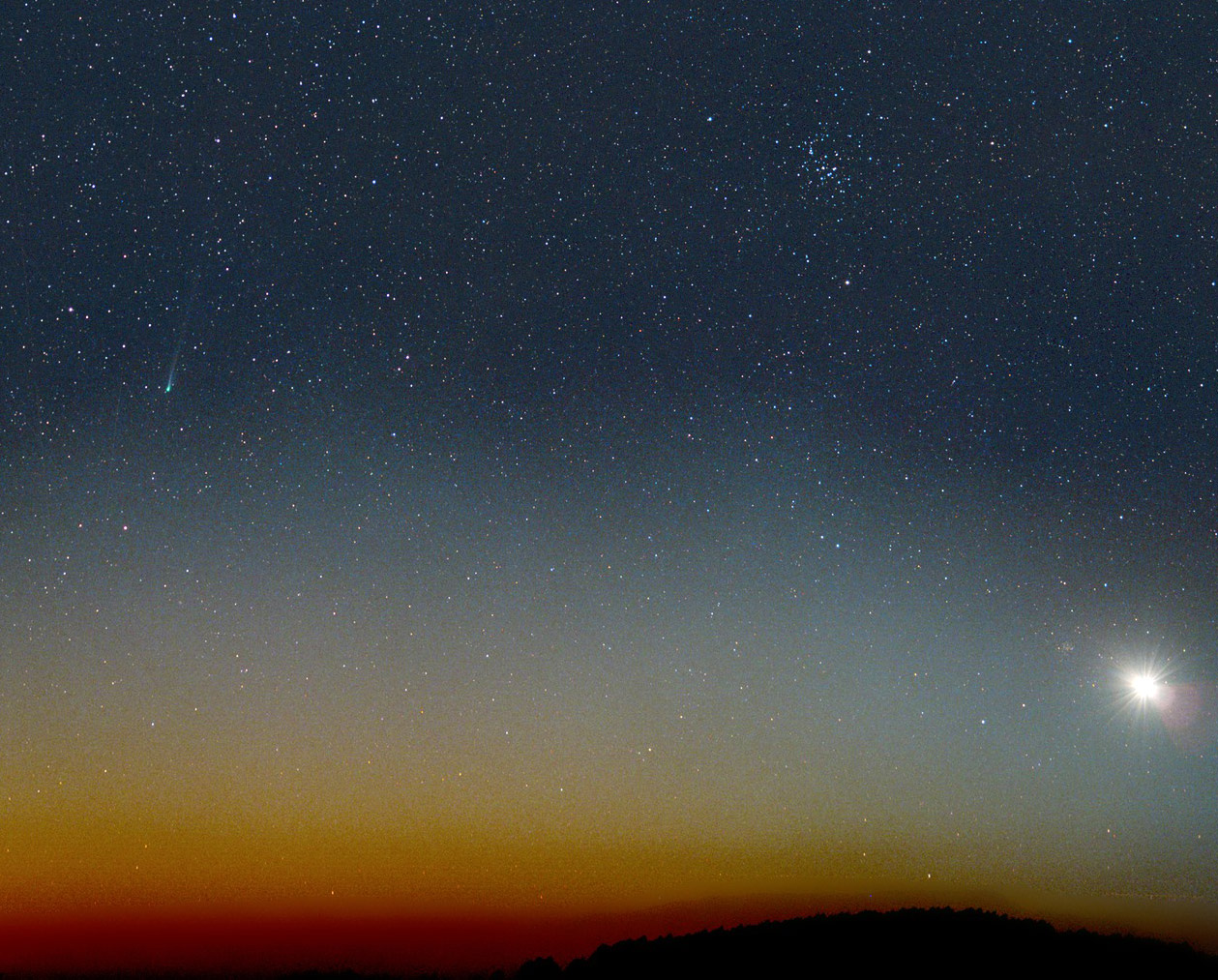From - Sky & Tellescope,
By - Alan Macrobert,
Edited by - Amal Udawatta

Comet Nishimura swings by for binoculars and telescopes. Comet Nishimura (2023 P1), discovered just last month, is brightening toward its September 17th perihelion.
The comet starts this week very low in the dawn sky. You'll need a low view to the east-northeast on the mornings of September 9th, 10th, and maybe 11th. The farther north you live the better. The waning crescent Moon won't pose interference.
By the 13th or 14th the comet shifts to the low evening sky, just above the west-northwest horizon during early to mid-twilight. Day by day it will move leftward, but no higher, to stand barely over the west horizon on its perihelion date, the 17th. This is also its predicted date of peak brightness — possibly 2nd magnitude, not counting the ill effects of bright twilight and atmospheric extinction that low.
Comments
Post a Comment